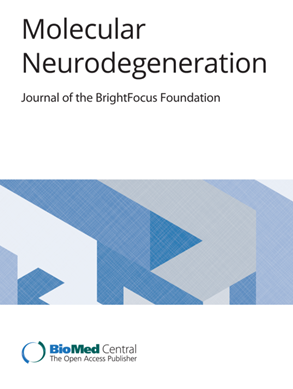Proteomic landscape of Alzheimer’s disease: emerging technologies, advances and insights (2021 – 2025)
IF 17.5
1区 医学
Q1 NEUROSCIENCES
引用次数: 0
Abstract
The advancements of proteomics technologies are shaping Alzheimer's disease (AD) research, revealing new molecular insights and improving biomarker discovery. Here, we summarize major AD proteomics studies since our 2021 review, focusing on disease mechanisms and biomarker identification. Enhanced sensitivity and throughput in proteome profiling have been driven by mass spectrometry (MS)-based approaches and affinity-based platforms (e.g., Olink and SomaScan). Emerging techniques, including single-cell, spatial, and single-molecule proteomics, provide unprecedented resolution in studying cellular heterogeneity and pathological microenvironments (e.g., amyloidome). Multi-cohort analyses of AD brain tissues have revealed consensus protein alterations (n = 866), identifying novel disease-associated proteins validated in functional studies (e.g., MDK/PTN, NTN1, SMOC1, GPNMB, NPTX2, NRN1, VGF, and U1 snRNP). Proteomic studies of AD biofluids have identified distinct disease subtypes, offering candidate proteins for early detection. Comparisons between human tissues and AD mouse models highlight shared pathways in amyloid pathology while underscoring limitations in recapitulating human disease. Combining proteomics with genomics enables protein quantitative trait locus (pQTL) analysis in AD, linking genetic risk factors to protein expression changes. Discrepancies between proteome and transcriptome suggest altered protein turnover in AD. Overall, AD proteomics continues to provide mechanistic insights into disease progression and potential biomarkers for precision medicine.阿尔茨海默病的蛋白质组学前景:新兴技术,进展和见解(2021 - 2025)
蛋白质组学技术的进步正在塑造阿尔茨海默病(AD)的研究,揭示新的分子见解和促进生物标志物的发现。在这里,我们总结了自2021年回顾以来主要的AD蛋白质组学研究,重点是疾病机制和生物标志物鉴定。基于质谱(MS)的方法和基于亲和力的平台(例如Olink和SomaScan)提高了蛋白质组分析的灵敏度和通量。新兴技术,包括单细胞、空间和单分子蛋白质组学,为研究细胞异质性和病理微环境(如淀粉样体)提供了前所未有的分辨率。阿尔茨海默病脑组织的多队列分析揭示了一致的蛋白质改变(n = 866),鉴定了在功能研究中证实的新的疾病相关蛋白(例如MDK/PTN、NTN1、SMOC1、GPNMB、NPTX2、NRN1、VGF和U1 snRNP)。阿尔茨海默病生物体液的蛋白质组学研究已经确定了不同的疾病亚型,为早期检测提供了候选蛋白质。人类组织和AD小鼠模型之间的比较强调了淀粉样蛋白病理的共同途径,同时强调了概括人类疾病的局限性。将蛋白质组学与基因组学相结合,可以对AD进行蛋白质数量性状位点(pQTL)分析,将遗传危险因素与蛋白质表达变化联系起来。蛋白质组和转录组之间的差异表明阿尔茨海默病的蛋白质周转发生了改变。总的来说,AD蛋白质组学继续为精准医学提供疾病进展和潜在生物标志物的机制见解。
本文章由计算机程序翻译,如有差异,请以英文原文为准。
求助全文
约1分钟内获得全文
求助全文
来源期刊

Molecular Neurodegeneration
医学-神经科学
CiteScore
23.00
自引率
4.60%
发文量
78
审稿时长
6-12 weeks
期刊介绍:
Molecular Neurodegeneration, an open-access, peer-reviewed journal, comprehensively covers neurodegeneration research at the molecular and cellular levels.
Neurodegenerative diseases, such as Alzheimer's, Parkinson's, Huntington's, and prion diseases, fall under its purview. These disorders, often linked to advanced aging and characterized by varying degrees of dementia, pose a significant public health concern with the growing aging population. Recent strides in understanding the molecular and cellular mechanisms of these neurodegenerative disorders offer valuable insights into their pathogenesis.
 求助内容:
求助内容: 应助结果提醒方式:
应助结果提醒方式:


